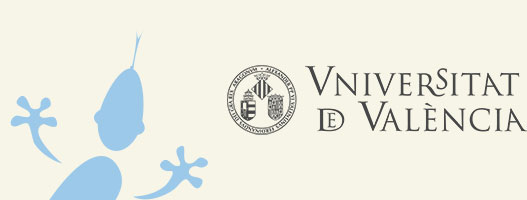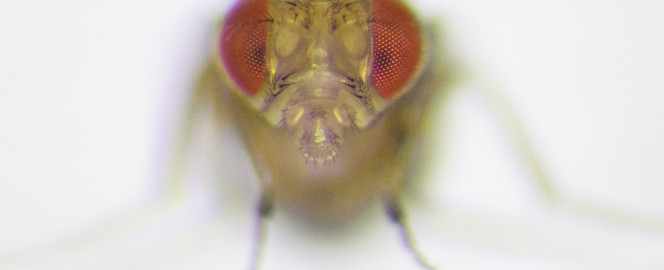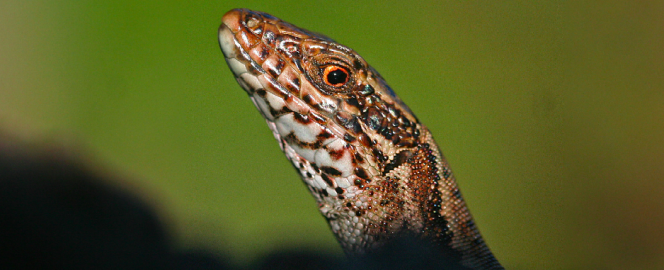Two positions are opening in our lab for 2017. Interested? Check out our Join us section for more details.


Two positions are opening in our lab for 2017. Interested? Check out our Join us section for more details.
Arnaud Badiane and Javier Abalos have been awarded a travel grant to attend the ASAB Easter Conference 2016 at Aberystwyth University, where they will present talks on the evolution and function of colour signals in lacertids. Both Arnaud and Javi are on the first year of their PhD, congratulations!
Is the inevitable really inevitable? Why are we doomed to age and die of old (if you’re lucky enough to survive everyday hazards, that is)? Check out my last divulgation piece on Mètode popular science magazine about why we age, featuring an ageless clam and a minute 8-legged super organism, could it be more enticing?

In collaboration with Ester Desfilis, I have recently quick started ‘Mind your Nature’, a new popular science section in Mètode, an award-winning Spanish Divulgation Magazine. The section will delve into the wonders of Animal Behaviour and explore how its study can help us understand human nature. In our first article, we present the section and outline its aims. Click here if you care to read about ‘The science of king Solomon’s ring’, and don’t forget to Mind your Nature!
Check out our recent ProcB paper on the effects of sex and personality traits on spatial learning in Eulamprus quoyii, an Australian skink.
Understanding individual differences in learning is a major challenge. We addressed the possibility that spatial learning ability is associated with personality traits, such as boldness, in males/females of the Easter Water Skink (Eulamprus quoyii). We show, for the first time in reptiles, that males are better spatial learners than females, which we suggest reflects their different social roles. Furthermore we show that, across the sexes, the boldest and shyest individuals were overall better learners than intermediate individuals. We argue this may reflect the importance of spatial learning in individuals adopting extreme alternative territorial (bold individuals) or sneaker (shy individuals) tactics.
For a more detailed account of this, visit Martin Whiting’s The Lizard Lab post here.

To resolve the mechanisms that switch competition to cooperation is key to understanding biological organization. This is particularly relevant for intrasexual competition, which often leads to males harming females. The romantic notion of sexual reproduction as a cooperative endeavour has been shattered by a host of studies depicting how male-male competition often leads to female harm, resulting in sexual conflict among the sexes. To males, females are an essential but finite resource over which they have to compete against other males, and hence sexual harm to females can be seen as a ‘reproductive tragedy of the commons’ that can potentially reduce population productivity to the point of extinction . However, social conflict and cooperation are two extremes of a continuum and a current mayor challenge in evolutionary biology is to resolve the evolutionary pressures that push populations along it. Recent theory proposes that one such pressure is kin selection, which may modulate female harm by relaxing competition among male relatives.
In a paper published last week in Nature (Carazo et al. 2014. Nature, 505, 672-676) we use Drosophila melanogaster to provide the first empirical demonstration that kin selection can modulate the intensity of sexual conflict and significantly impact female fitness and male/female ageing. Females kept in groups of related brothers aged more slowly and had a higher lifetime reproductive success that females raised in groups of unrelated males. The signature of sexual conflict was evident in that males kept with brothers courted females less intensively, fought less among them and, as a consequence, lived longer than males kept with unrelated males. Sexual competition among relatives can happen under a wide range of ecological situations that are frequent in nature, such as spatially viscous populations and species in which males do not disperse, mate before disperse, or disperse with kin. Hence, kin selection may offer important insight into our understanding of the evolution of sexual conflict and cooperation in structured populations. See also Scott Pitnick and David Pfennig’s nice comment of our paper in News & Views (Pitnick & Pfennig. 2014. Nature, 505, 626-627).

Our latest paper on the evolution of signal unreliability and deception has just been published in Animal Behaviour. Animal signals must allow receivers to make adaptive decisions better than they would in their absence. This fundamental tenet of animal communication hinges on the existence of a consistent relationship between the design of a signal and the functional information it makes available to receivers, but this leaves ample space for the evolution of deception and signal unreliability. In this paper, we argue that unreliability and deception are notions marred with conceptual ambiguities, often used as equivalent or as catch-all terms for qualitatively different processes. Signal unreliability refers to a pattern of design–information dissociation that can arise through different processes, some deceptive and some not, with different evolutionary implications. We point out (what we believe) are such misunderstandings and suggest adopting a theoretical framework explicitly based on the evolutionary scenarios leading to signal unreliability and deception, which has advantages over traditional schemes focusing exclusively on whether signals benefit receivers or not.

In a study that has just been published in Frontiers in Psychology, we show that beetles (Tenebrio molitor) use numerical cues to evaluate the number of rival males they encounter before mating. Due to their sophisticated sperm competition mechanisms, T. molitor males are in a lot of (selective) pressure to asses the number of males around during mating to assess the risk that the female they are mating with may re-mate quickly with a second male. In this specie, as in many other insects, males transfer their sperm wrapped up in a package called spermatophore. Once the spermatophore is inside the female, it will begin to inflate by osmosis (like a ballon) until it bursts open and individual sperm are released into the female reproductive tract. This process lasts between 7-10 minutes, after which sperm will be stored in the female spermatheca (an organ specialised in storing sperm) until used to fertilise eggs. That is, if a second male doesn’t prevent it… In this species, the male aedeagus (insect jargon for ‘penis’) is covered in spines that will puncture the spermatophore of a rival male, preventing it from inflating and hence completely avoiding sperm release. By this mechanism, called spermatophore inhibition, a male is thus in risk of loosing all his progeny if the female it has mated with re-mates with a second male before its own sperm has been released (< 7-10 minutes).
Because the risk of this happening directly depends on the average encounter rate between males and females, we thought this was a perfect biological system to test whether beetles are spontaneously capable of assessing quantities based on numerical cues. We set out on this task by staging matings between virgin females and virgin males in which we varied the number of rival males the experimental male had access to immediately preceding mating (1-4 rival males). Rival males were presented sequentially, and we controlled for continuous cues by ensuring that males in all treatments were exposed to the same amount of male–male contact. Briefly, in the ‘one male’ treatment the experimental male was sequentially presented with the same rival male four consecutive times (i.e. each presentation consisting of 3 minutes of male-male contact followed by 2 minutes of isolation) during the 20 minutes immediately before being presented with a virgin female. In the ‘two males’ treatment, experimental males were first presented with male A, then male B, then male A again, and then male B again, following the same procedure as in the ‘one male’ treatment; and so on with the ‘three males’ (male A, male B, male C, male A) and the ‘four males’ (male A, male B, male C, male D) treatments. Crucially, the only difference between the four treatments was the number of different males presented, which varied from 1 to 4. We found that males triplicated the time they devoted to mate guarding females in the ‘four males’ treatment, precisely in the treatment simulating an encounter rate reflecting a real risk of suffering from spermatophore inhibition! Since males could not rely on continuous cues we conclude that they kept a running tally of the number of individuals they encountered serially, which meets the requirements of the basic ordinality and cardinality principles of proto-counting. Our results thus offer good evidence of “true” numerosity estimation or quantity estimation and, along with recent studies in honey-bees, suggest that vertebrates and invertebrates share similar core systems of non-verbal numerical representation. You can download the pdf of this article here.

In some species, individuals of the same sex come in different colours or morphs, a phenomenon known as colour polymorphism. A recurring question in the study of polymorphic species is what evolutionary processes may allow the coexistence of different morphs in the wild. Lizards of the genus Podarcis are ideal subjects in which to test this question because colour polymorphisms are very common in this group. Previous studies, however, have focused on processes that have to do with male-male competition and the role of different reproductive strategies in maintaining colour polymorphisms. In this study, we asked whether assortative mate preferences (i.e. a preference to mate with a partner exhibiting the same morph) may also be involved in maintaining colour polymorphisms in lizards. We used longitudinal behavioural data obtained during six consecutive breeding seasons (2006-2011) in a free-ranging polymorphic population of Podarcis muralis lizards. In this population, males and females exhibit three different colours in their throat and underside (i.e. orange, yellow and white). Using objective techniques of colour measurement, we confirmed the existence of discrete colour morphs and showed that these morphs are stable in time once they develop fully when individuals reach sexual maturity. More importantly, we show that male-female pairs of the same morph are more common than pairs involving males and females of different morphs. Our results suggest that mate preferences (i.e. colour assortative mating) may be important in the maintenance of discrete colour morphs in this and other lacertid species. Check and download the paper here, or go to publicationsfor a post-print version. The paper has just been published online in Behavioural Ecology.